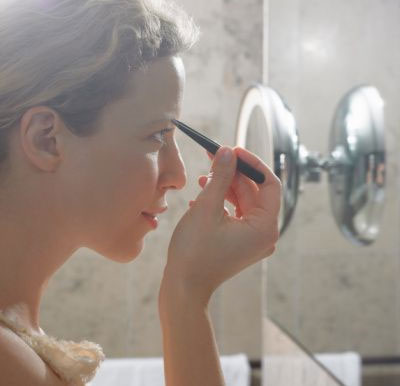AFP
3 июн. 2009 г.
Looking good, an obsession since antiquity
AFP
3 июн. 2009 г.
PARIS, June 3, 2009 (AFP) - The desire to look one's best has been a human obsession since the dawn of time, and the seeds of today's cosmetics industry were sown in antiquity, an exhibition on the history of personal grooming shows.
 |
"The Bath and the Mirror", which traces the importance of bathing and body care from the Greeks and Romans to the Renaissance, has been jointly mounted by the Cluny Museum of the Middle Ages in Paris and the Chateau d'Ecouen, which houses the national Renaissance collection (until September 21).
The theme is particularly apposite at the Cluny site, which includes the remains of public baths dating from the Roman empire. And the bulk of the 350 exhibits are set out in the newly-restored "frigidarium", the cool, dry north-facing part of the baths, which contained a plunge pool.
This is where bathers would go to relax and socialise after working out in the gym, where they rubbed their bodies with oils to protect their skin from the sand, or sweating in the hot rooms.
"Going to the baths was part of daily life. Even people from relatively modest parts of society went, it was not reserved for the elite," says curator Isabelle Bardies-Fronty.
Most of the everyday toiletry necessities from that era have come down to us thanks to the custom of burying such items with the dead for use in the after-life, she explains.
Tombs have yielded up mirrors, combs, hair-pins, tiny boxes or "pyxides" of make-up with spatulas to apply it, "strigils" to scrape off rough skin, and also "aryballos" -- a globe-shaped flask in thick glass used to carry oils.
Researchers at the Louvre museum and the cosmetics giant L'Oreal have taken miniscule amounts of the residue of powders and unguents and subjected them to high-tech analyses by particle-accelerator and electro-microscopy to determine their composition.
In Roman times pale complexions were admired, so faces were whitened with chalk and kaolin, even toxic lead, and the equivalent of today's blusher contained madder root, kermes or some other red mineral.
Flowers were macerated in almond and olive oils for body rubs and perfumes.
As early as the 6th century BC, luxury packaging had already become important as a sign of wealth and status: the exhibition includes exquisite mini amphora in moulded glass and alabaster and little bottles shaped like shells for cologne, silver mirrors and powder compacts that are breathtakingly modern.
Long before women's magazines, fashion was a concept, but propagated quite differently. For example, hairstyles were copied from coins and medallions which circulated throughout the Roman empire, and from busts of the emperor and his consort erected in public places.
"What better way to be in fashion than to wear your hair the same as the sovereign or his wife? It was also a sign of social integration," says Bardies-Fronty.
In the Middle Ages, flowing tresses were considered beautiful and women dyed their hair wearing wide brimmed hats to protect their pales faces from the sun, pulling their hair through a hole in the top to dry.
Mixed sex public bathing was the norm in many parts of Europe in the late Middle Ages, according to rare engravings by Albrecht Durer in the second half of the exhibition at the Chateau d'Ecouen. The titillating scenes, often with women in suggestive poses, fell out of favour with more prudish later generations and the engravings were mostly destroyed.
The chateau has a suite of private bathrooms, rarely open to the public, to which rain water from the central courtyard was channelled and then purified for the use of the aristocratic elite in their ablutions.
A lady's toilette in the Renaissance was a very public affair, so items used in the ritual were appropriately extravagant and precious, from enamelled boxes for potions to silver toothpicks and ear-cleaners.
Because of their high value, like the bejewelled segmented pomanders worn on chains or attached to a belt, they have been passed down to posterity.by Sarah Shard
Копирайт © 2024 AFP. Все права защищены. Любая информация даннного раздела защищена законом об интелектуальной собственности и не может быть скопирована, перепечатана, изменена, издана или использована в коммерческих целях.

























